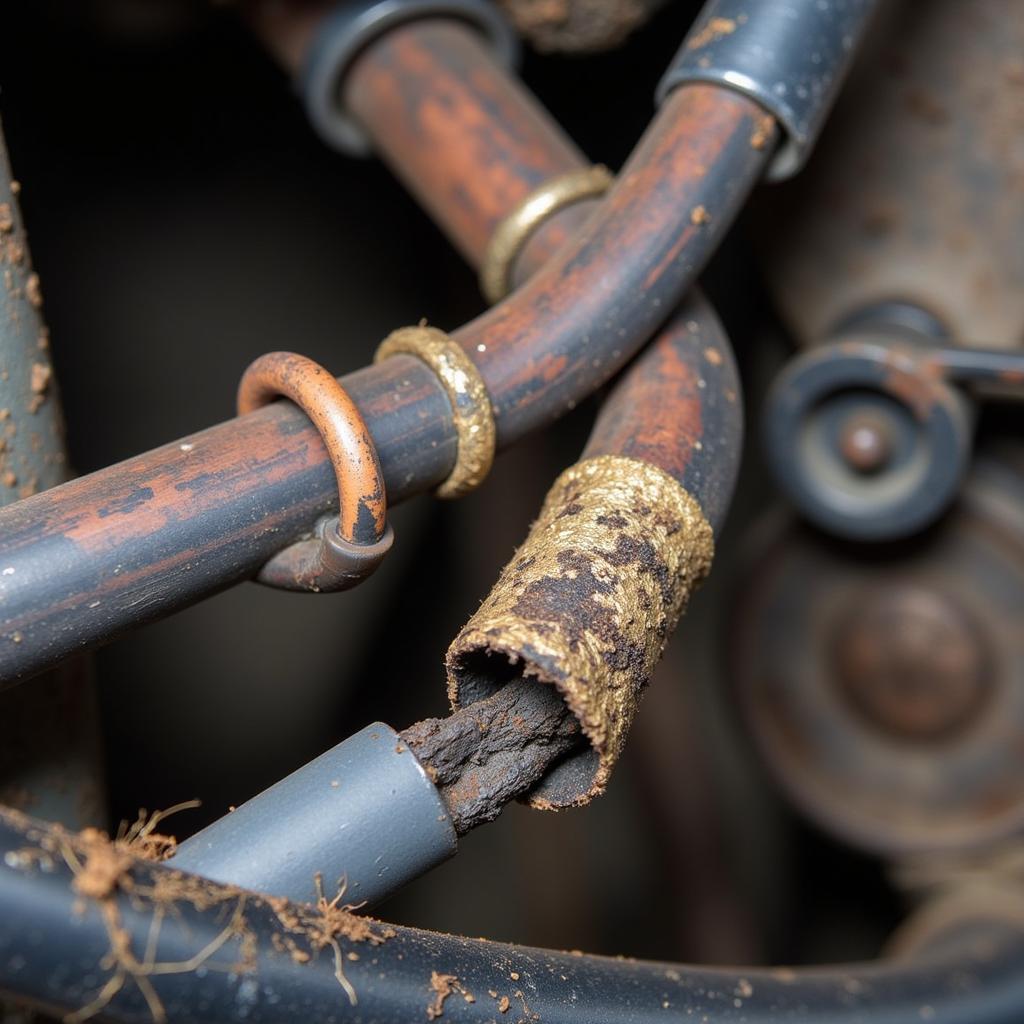A blinking brake warning light on your dashboard is never a good sign. It signifies a potential problem within your braking system, demanding immediate attention. Whether it’s a persistent flash or an intermittent flicker, understanding the root cause of this blinking brake warning is crucial for ensuring your safety and the proper functioning of your vehicle.
Decoding Your Blinking Brake Warning
A blinking brake warning light can indicate several issues, from a simple low brake fluid level to more complex problems like a malfunctioning ABS system. Ignoring this warning can lead to costly repairs or even dangerous driving situations. So, what are the most common reasons for a blinking brake warning?
Common Causes of a Blinking Brake Warning Light
- Low Brake Fluid: This is the most frequent culprit. Check your brake fluid reservoir. If the level is low, it could indicate a leak or worn brake pads. blinking brake warning light
- Faulty ABS System: The Anti-lock Braking System (ABS) prevents wheel lockup during hard braking. A blinking brake warning light, often accompanied by an ABS warning light, could signify a problem with this system, such as a faulty sensor or pump.
- Worn Brake Pads: As brake pads wear down, they can trigger a sensor that activates the blinking brake warning light. This is a crucial warning as it signals the need for immediate brake pad replacement.
- Parking Brake Engaged: Sometimes, the simplest explanation is the correct one. Ensure your parking brake isn’t engaged. A partially engaged parking brake can also trigger the warning light.
- Electrical Issues: A faulty sensor, wiring problem, or malfunctioning brake light switch can also cause the brake warning light to blink. blinking brake warning subaru legacy
“A blinking brake warning light, especially in conjunction with other warning lights or unusual brake behavior, warrants immediate professional diagnosis,” advises John Miller, Senior Automotive Diagnostic Technician at Miller Automotive Solutions.
Troubleshooting a Blinking Brake Warning Light
Here’s a step-by-step guide to help you troubleshoot the issue:
- Check the parking brake: Make sure it’s fully disengaged.
- Inspect the brake fluid level: Top it off if it’s low, but if you find yourself adding fluid frequently, suspect a leak.
- Examine your brake lights: If your brake lights aren’t working, it could point to a faulty brake light switch, which can also trigger the blinking brake warning light.
If these initial checks don’t resolve the issue, it’s best to seek professional assistance.
The Power of Remote Diagnostics and Programming
Modern vehicles are increasingly reliant on sophisticated software and electronic systems. This complexity makes remote diagnostics and programming a powerful tool for quickly and accurately identifying the root cause of a blinking brake warning.
Remote diagnostics can pinpoint issues with the ABS system, sensors, and other electronic components without requiring a physical visit to a repair shop. This saves time and money, allowing technicians to provide precise solutions efficiently. 05 ram blinking brake light warning light
“Remote diagnostics have revolutionized the way we approach car repairs. It allows us to quickly identify complex issues and even reprogram faulty modules remotely, minimizing downtime for the customer,” says Sarah Johnson, Lead Software Engineer at Advanced Automotive Diagnostics. subaru blinking brake warning light
Keeping Your Brakes in Top Condition
Regular brake inspections and maintenance are essential for preventing issues and ensuring your safety on the road.  Mechanic Inspecting Brake Pads
Mechanic Inspecting Brake Pads
- Regular Brake Checks: Have your brakes inspected at least once a year or every 12,000 miles.
- Timely Brake Pad Replacement: Don’t wait until your brake pads are completely worn down. Replace them as recommended by your mechanic.
- Quality Brake Fluid: Use high-quality brake fluid and ensure it’s changed as per your vehicle’s maintenance schedule.
A blinking brake warning requires prompt action. Addressing the underlying issue quickly not only ensures your safety but also prevents potentially costly repairs down the line. blinking brake warning light 2006 dodge durango
FAQ
-
Is it safe to drive with a blinking brake warning light? No, it’s not safe. It indicates a potential problem with your brakes, which can compromise your safety.
-
Can low brake fluid cause a blinking brake warning light? Yes, low brake fluid is a common cause.
-
How often should I check my brake fluid? Check your brake fluid level at least once a month.
-
What does ABS stand for? ABS stands for Anti-lock Braking System.
-
Can remote diagnostics fix a blinking brake warning light? Remote diagnostics can pinpoint the cause, and in some cases, reprogramming or software updates can resolve the issue remotely.
-
How much does a brake repair typically cost? The cost varies depending on the issue, but it’s always best to address the problem promptly to avoid more expensive repairs later.
-
How can I prevent brake problems? Regular maintenance, including brake inspections, timely brake pad replacement, and using quality brake fluid, can help prevent issues.


